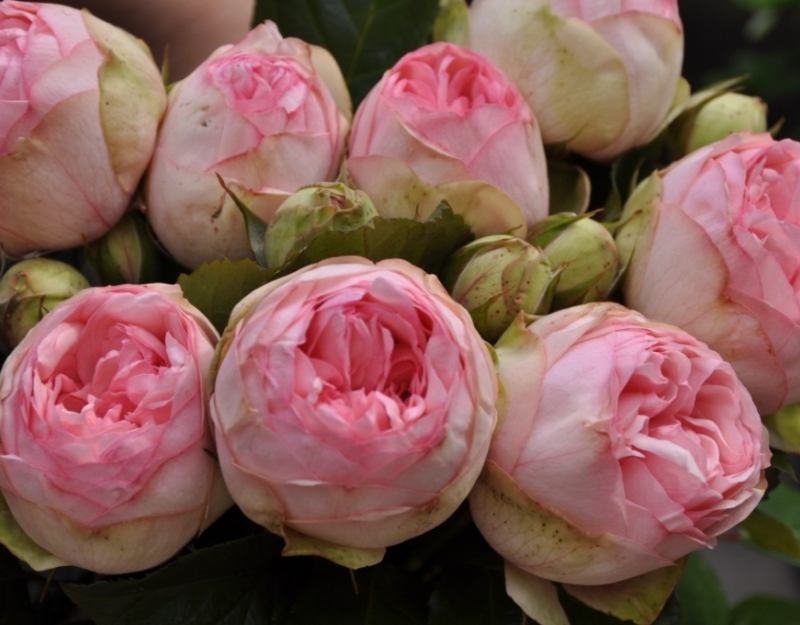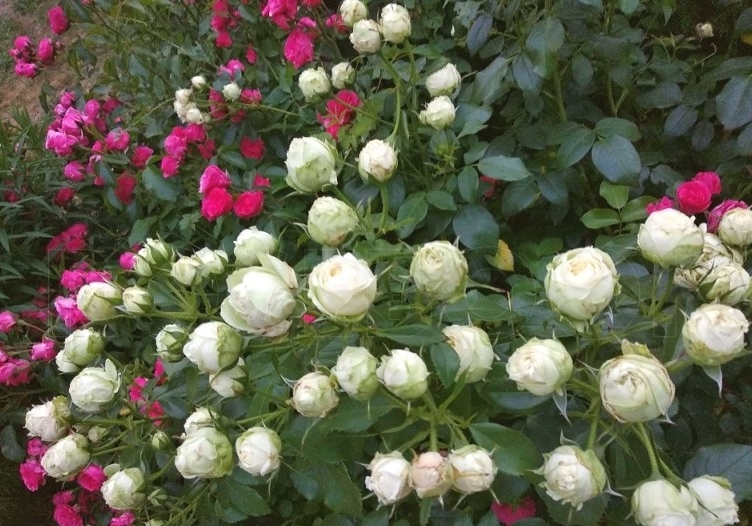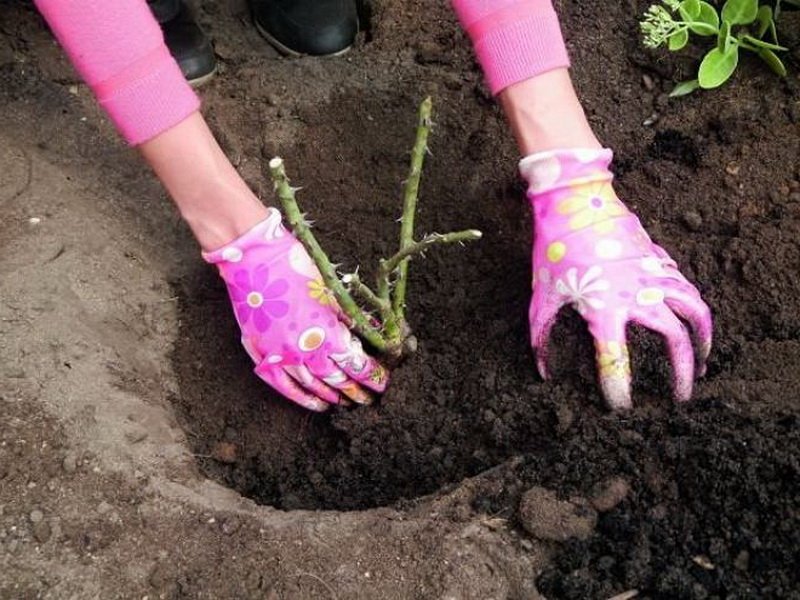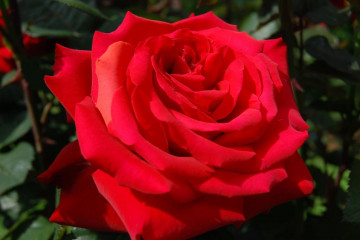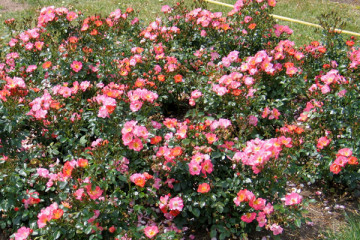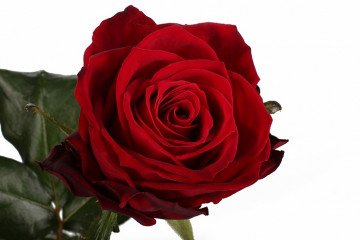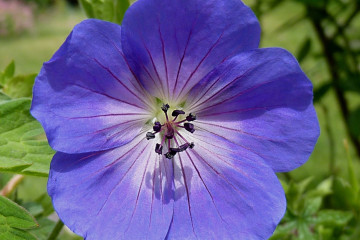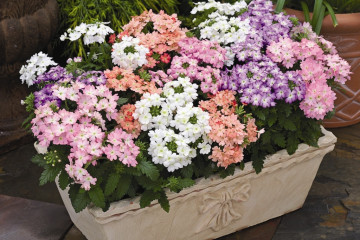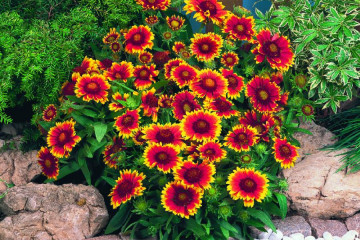Rosa Piano (Piano) - what is this hybrid tea group
Content:
There are 25 thousand varieties of roses in the world. Each one is worthy of admiration. Variety descriptions constitute many volumes. One of the most beautiful representatives of the family is the Piano rose.
Rose Piano (Piano) - what kind, history of creation
Tea roses are very popular among flower growers. But these varieties are painful, attacked by pests. They are difficult to look after.
British breeders set out to grow a disease-resistant tea rose hybrid. Thousands of experiments on crossing the tea rose with other varieties have been crowned with success. In 2007, the Piano rose was introduced to the world.
In a short time, the tea hybrid gained universal recognition and distribution in gardens and parks on all continents. The predominant color of the plant's buds is bright red, hence the name of the variety - Red Piano rose. In Russia, the flower is called the Piano rose.
Description, characteristics of the variety
It is a bushy plant with luxurious double flowers. Features of the variety:
- Bush. Compact, grows up to 1.3 m. In a circle of 0.5-0.6 m.
- Shoots. Thick (2 cm), juicy, not prone to bending. Branches are firm, densely leafy.
- Sheet. Bright green, leathery carved with a characteristic glossy sheen.
- Flower. The buds are of the correct spherical shape. The flowers become cupped as they bloom. The petals are tightly packed, there are 80-100 of them in the bud. At the beginning of flowering, the core is not visible. The buds are collected in a brush of 4-8 pieces. The diameter of the flowers of young plants is up to 7 cm, adult shrubs are strewn with flowers up to 11 cm in circumference.
- Decorativeness. The culture is blooming again. The process continues from June to late autumn. The continuously flowering plant is an incredibly beautiful sight.
- Aroma. Saturated, sweetish and inviting. Connoisseurs highlight the fruity notes.
- Colour. Bright red, luminous, cutting eyes.
The plant's high resistance to disease makes caring for it a pleasant pastime.
Popular varieties of the Piano hybrid
Dark red is not the only color typical of the plant's flowers. The peony rose Red Piano with velvety petals, the outer of which, deep burgundy, gracefully curved outward, remains dominant in the series of this hybrid. The middle of the bud is bright red.
Other types:
- Rose Charming Piano is a random mutation from the main species. In the first year of life, the plant disappoints with a faded pink flowering with a greenish tint.
- Rose Happy Piano - This version of the red rose is light pink. Her flowers are of medium size (6-8 cm), the bushes look picturesque. Resistance to powdery mildew and rain contributed to the spread of the plant in Europe and Russia. The culture blooms all season.
- Rosa Bridal (Bridal) Piano - suitable for bouquets. Delicate scarlet petals are tightly collected in the bud. Flowers bloom slowly, do not fade for a long time. Rose Bridal Piano blooms again all summer long, has a delicate aroma. The bush is neat, the branches are erect.
- Freeland Piano is a hybrid tea rose with light pink flowers. The bush is up to 80 cm high, neat, looks beautiful in the flower bed.
- Wedding Piano - the variety has a romantic creamy white color, resistant to rain. The culture is recommended to be planted in groups in combination with blue perennials.
- Pink Piano is a rare magenta pink color. The buds are round, of medium size.
Piano varieties bloom profusely, are not afraid of the wind, do not get sick with black spot.
Growing a flower
Florists are happy to grow this ornamental plant. Bush rose Piano floribund looks good in the garden, in flower beds. In a group of perennials or a single bush - the culture is always spectacular. Growing it is not a hassle.
Site selection, soil requirement
Rose loves sunlight. The piano tolerates partial shade, but it is better if it is in the sun all day. In a flower bed, it is planted on the east side. Morning rays have a beneficial effect on the growth of shoots. The place should be ventilated, but free from drafts.
In rainy weather, bud opening slows down. Favorable air temperature + 18-22 ° С. In winter, the plant tolerates frosts down to -20 ° C without shelter. If the thermometer shows 22-25 below zero, the plant is wrapped.
Selection of seedlings
For planting, take a one-year or two-year seedling with 2-3 lignified stems. Pay attention to the roots. Dry, brittle, with traces of mold, do not take.
Better to take a container. The plant easily tolerates transportation, it is planted along with a lump of earth.
If the roots are open, make sure that they do not dry out before planting. A cultivated rose grafted onto a rosehip is taken as an annual. She is already viable and winter hardy. In order to acquire such qualities, your own seedling must live in the nursery for two years.
Planting time is autumn before frost or spring, when stable warm weather sets in.
Planting step by step
Seedlings are freed from packaging and paraffin, if the stems were covered with them. The roots are pruned, and the branches are also obliquely cut 2 cm above the outer bud.
Further actions:
- Dig a hole 40-60 cm in diameter. The depth is the same.
- Drainage is poured to the bottom.
- On it - humus or compost with 2 glasses of ash.
- Next, a mound of fertile land is poured.
- A seedling is placed in the hole, the roots are straightened.
- Sprinkle with soil, deepening the root collar by 5-8 cm.
- Water with a solution where the roots have been soaked.
- A place near a young bush is mulched.
- The planting is shaded for two weeks.
Plant care
Care measures are standard:
- Watering. In hot weather, they monitor the drying out of the soil. If it has dried 3-5 cm, the plant is watered with settled water heated by the sun. A young bush will need 5-6 liters of liquid, an adult - 10-12 liters.
- Loosening. It is carried out after each watering. Take care not to form a hard crust. Weeds are removed.
- Top dressing. In the spring, nitrogenous fertilizers are used, during flowering they give potash and phosphorus compounds.
- Pruning. The procedure is performed in the spring. Fatty, diseased and dry shoots are cut off.
Reproduction
At home, the best way to propagate roses is by cuttings.
To do this, in the fall, a fragment of 30 cm is cut off from the one-year shoot. The lower cut is made straight directly under the kidney. The upper one is oblique, 2 cm above the kidney. The cuttings are placed in a pot with nutrient mixture for rooting. In winter, it is looked after, watered, and in spring, together with the ground, it is transferred to open ground.
The shanks cut in this way can be planted directly into damp ground. At the same time, a 45 ° tilt of the cutting is observed. It is covered with a plastic bottle with holes for air circulation. For the winter, the seedling is wrapped in straw, and in the spring it is transplanted to a new permanent place.
Piano roses are extremely decorative plants. They are classified as tea varieties. Gardeners love them because the plants do not get sick with spotting and powdery mildew.Cultivation of a culture does not require much effort, only the implementation of a standard set of care procedures.

